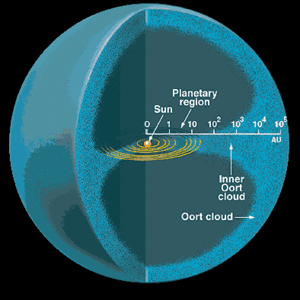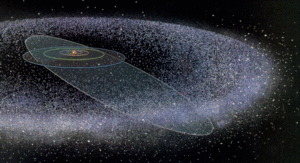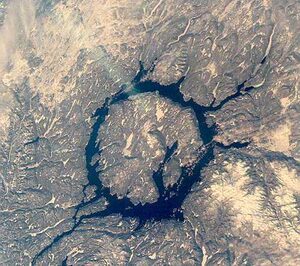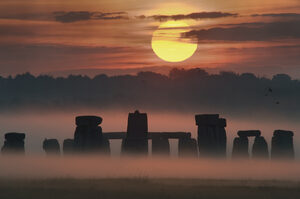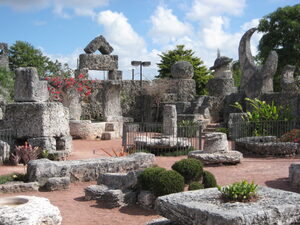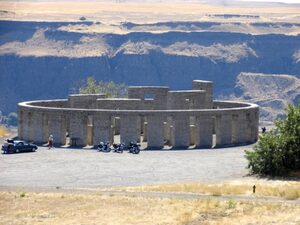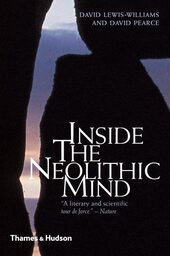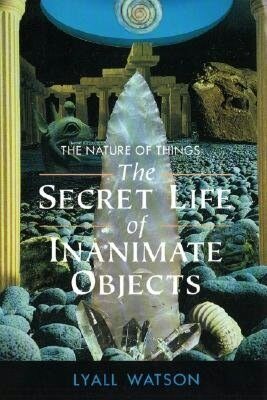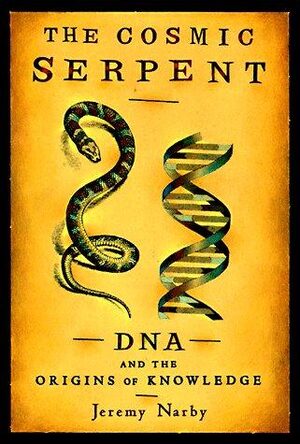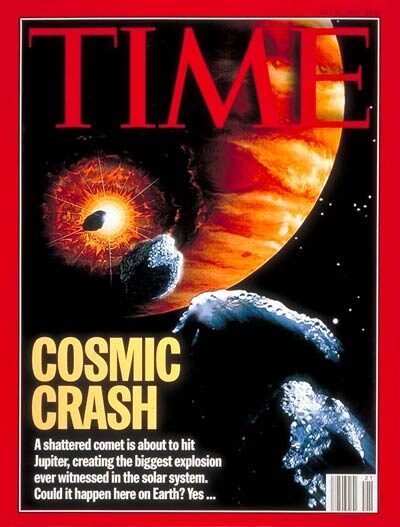 I’m going to begin this installment of the Cs Hit List by picking up where we left off in the last one: the idea that our sun has a companion star. After publishing Cs Hit List 06 and reflecting on it some more, I realised that my argument for why our sun might have a companion star – simply that it’s statistically probable – was kind of weak. There’s actually more to it than that, even if such a companion has yet to be discovered. (Assuming it’s there, of course, and that we would be told if it was actually discovered!).
I’m going to begin this installment of the Cs Hit List by picking up where we left off in the last one: the idea that our sun has a companion star. After publishing Cs Hit List 06 and reflecting on it some more, I realised that my argument for why our sun might have a companion star – simply that it’s statistically probable – was kind of weak. There’s actually more to it than that, even if such a companion has yet to be discovered. (Assuming it’s there, of course, and that we would be told if it was actually discovered!).
In fact, it’s not a new idea. Check out the Wikipedia page on the so-called ‘Nemesis’ hypothesis. (And see here for additional resources.) It was introduced in 1984 by two teams of astronomers (Whitmire & Jackson, and Davis, Hut & Muller) to explain the periodically spaced extinction events observed in the earth’s fossil record. The idea was that a companion sun passing through or close to the spherical Oort cloud would send a death-dealing swarm of comets in earth’s direction every 26 million years or so. Its presence may also help explain the non-random trajectories of certain long-period comets, as well as the strange and unexpected elliptical orbit of the recently discoveredtransneptunian object Sedna.
Recently, astrophysicists Daniel Whitmire and John Matese have been arguing for a ‘Planet X’ model to explain these phenomena, i.e. an undiscovered tenth planet existing beyond Pluto, possibly up to 4 times the mass of Jupiter. Perhaps prematurely, given that it’s purely theoretical at this point, they’ve even given it a name – ‘Tyche’. Using the same Oort-disturbing mechanism as Nemesis, the hypothetical gas giant might explain the angle at which comets enter the solar system, with“a fifth of the expected number since 1898 entering higher than expected”. Matese and Whitmire are hopeful that NASA’s Wide-field Infrared Survey Explorer (WISE) telescope, which has the ability to detect such objects, will show evidence for Tyche, once the already-recorded data is analyzed. (Incidentally, WISE also has the ability to spot a brown dwarf.)
Nemesis is thought to have its furthest point in orbit anywhere from 25,000 to 88,000 astronomical units (AU) from the Sun. Tyche, however, is thought to orbit “well within” (as Wikipedia puts it) the Oort cloud, at 15,000 AU, with its gravity tugging stray comets into the solar system. (The outer, spherical Oort cloud is thought to begin anywhere from 20,000 to 50,000 AU from the Sun.) However, the disc-shaped inner Oort cloud, or ‘Hills cloud’, which extends outward along the plane of the ecliptic to join up with the outer cloud, is hypothesized to be as close as 3000 AU. (On 4 July 1998, the Cs said that the Oort cloud’s closest boundary averaged approximately 510 billion miles, or around 5500 AU.) So if the orbit of any ‘Planet X’ or companion star brings it through this ‘disc’ of comets, the Hills cloud could be another source of cometary ammo, not just the outer cloud, as some articles I’ve read on the subject seem to imply. Keep these figures in mind as you read the following abstract froma recent paper by Italian astrophysicist Lorenzo Iorio:
A recent analysis of a Lunar Laser Ranging (LLR) data record spanning 38.7 yr revealed an anomalous increase of the eccentricity [e] of the lunar orbit …The present-day models of the dissipative phenomena occurring in the interiors of both the Earth and the Moon are not able to explain it. We examine several dynamical effects, not modeled in the data analysis, in the framework of long-range modified models of gravity and of the standard Newtonian/Einsteinian paradigm. It turns out that none of them can accommodate de/dt_meas. Many of them do not even induce long-term changes in e; other models do, instead, yield such an effect, but the resulting magnitudes are in disagreement with de/dt_meas [this is “the time variation in eccentricity (the “ovalness” of the Moon’s orbit)”]. In particular, the general relativistic gravitomagnetic acceleration of the Moon due to the Earth’s angular momentum has the right order of magnitude, but the resulting Lense-Thirring secular effect for the eccentricity vanishes. A potentially viable Newtonian candidate would be a trans-Plutonian massive object (Planet X/Nemesis/Tyche) since it, actually, would affect e with a non-vanishing long-term variation. On the other hand, the values for the physical and orbital parameters of such a hypothetical body required to obtain the right order of magnitude for de/dt are completely unrealistic. Moreover, they are in neat disagreement with both the most recent theoretical scenarios envisaging the existence of a distant, planetary-sized body and with the model-independent constraints on them dynamically inferred from planetary motions. Thus, the issue of finding a satisfactorily explanation for the anomalous behavior of the Moon’s eccentricity remains open.
So, a companion object can explain the anomaly, but not using the accepted sizes and orbits for hypothetical Planet X-type objects. As Iorio writes in the paper: “For example, a terrestrial-sized body should be located at just 30 au, while an object with the mass of Jupiter should be at 200 au.” (A sun-sized object would be at around 9000 AU.) In other words, not where Matese and Whitmire say it is (or rather, should be). But what about a much larger object, perhaps with a much more distant orbit? While subject to some degree of ‘noise’, apparently such highly eccentric and long orbits are possible, and stable enough to persist over long periods of time. Taking all of that into account, the sun companion model may be more likely than a gas giant. (But even then, they’re not mutually exclusive; I suppose extra planets could exist, but they may not account for certain phenomena associated with ‘Nemesis’.) It would be interesting to know exactly what other figures do fit into Iorio’s calculations, and whether they match those compatible with a brown dwarf, or not. (Mathematicians, plug away!)
So, something’s going on. When we consider the steady slowing of earth’s rotation, the progressive snaking of its magnetic poles, climate change, the accelerating rate of ‘axial precession’, the increasing number of fireball and meteorite sightings, strange electromagnetic phenomena, and similar effects and anomalies on planets throughout the solar system, including the baffling asymmetric reversal of the Sun’s magnetic field, I wonder whether we aren’t seeing the multiple, gradually escalating effects of a common cause?
‘Revelatory confirmation’ of the brown dwarf hypothesis has already been announced, but despite its inclusion of many elements of the Cs’ model (e.g., brown dwarf, closest approach just beyond Pluto, etc.), and in spite of NASA’s somewhat heavy-handed dismissal of it as a hoax, it does look to me to be ‘too good to be true’. As far as I can tell, the StarViewer Team of Spanish astronomers who made the announcement have so far failed to publish their ‘final report’ containing their alleged proof on the subject, which was originally scheduled for publication in February 2010. (You can read translations of some of StarViewer’s writings here and here.) I’ll leave it up to the reader to form his or her own conclusions on the matter.
Comet Clusters and Dinosaurs
Even though the idea of an Oort-disturbing body has been around for almost 30 years, suggesting at least the possibility of dense swarms of comets (another model being Clube & Napier’s break-up of a giant comet), and even though 1994 saw the break-up and fragmentation of Shoemaker Levy-9 before it slammed into Jupiter, most discussions of comet or asteroid bombardment in the media still stress the danger of asingle impact, i.e. a giant cosmic body crashes into earth with a giant explosion resulting in cold-inducing, extinction-causing dust cover. And even then, the ‘American school’ has tended to dismiss the danger posed by comets, placing its focus on asteroids instead. But as early as 30 September 1994, the Cs brought up the idea of comet clusters being at least partly responsible for the periodic catastrophes on earth, echoing the works cited above:
Q: (L) The sun is not the source of the periodicity of ‘dyings’, is that correct?
A: Sometimes. Many causes.
Q: (L) Well what is the cause that recurs like clockwork? Is there some cause that is a regular pulsation?
A: Cometary showers.
Q: (L) Where are these cometary showers from?
A: Clusters in own orbit. [HK: Note that this is clusters, in plural. A long-period companion sun can trigger any number of shorter period clusters. According to the Cs, one of these clusters has a 3,600-year period, as I discussed in Cs Hit List 03.]
On 7 October 1994, Laura specifically asked about the dinosaur extinction (placed at 65.5mya by conventional chronology):
Q: (L) What killed off the major dinosaurs?
A: Comet impact.
Q: (L) What was the source of this comet?
A: Cluster.
Q: (L) How long has this comet cluster been with us in our solar system?
A: 890 million years.
On 27 August 2010, BBC ran this article on their website:
The dinosaurs were wiped out 65 million years ago by at least two meteorite impacts, rather than a single strike, a new study suggests.
Previously, scientists had identified a huge impact crater in the Gulf of Mexico as the event that spelled doom for the dinosaurs.
Now evidence for a second impact in the Ukraine has been uncovered. …
The new findings are published in the journal Geology by a team lead by Professor David Jolley of Aberdeen University.
When first proposed in 1980, the idea that a meteorite impact had killed the dinosaurs proved hugely controversial. Later, the discovery of the Chicxulub Crater in the Gulf of Mexico, US, was hailed as “the smoking gun” that confirmed the theory. …
Professor Kelley continued: “It is quite possible that in the future we will find evidence for more impact events”.
Rather than being wiped out by a single hit, the researchers think that dinosaurs may have fallen victim to a meteorite shower raining down over thousands of years.
What might have caused this bombardment is highly uncertain.
So some scientists are at least starting to look in this direction, and the idea of comet-fragment showers recently got another boost with the publication of Isabel Israde-Alcántara et al‘s new PNAS paper ‘Evidence from central Mexico supporting the Younger Dryas extraterrestrial impact hypothesis’. It looks like such events are a lot more common than scientists have believed in the past, and that the Cs were right on the money about one of the mechanisms involved in these catastrophic encounters.
Food for the Moon
Comet clusters came up in another context on 22 October 1994, this time in relation to the moon:
Q: (L) When and how did planet earth acquire its moon?
A: Was caused by the regular passage of a large comet cluster which caused a gravitational disruption allowing a large chunk of the original earth’s surface, which was somewhat less solid at that point in space/time, to break away from the main body and assume a locked in orbit around the main body.
Q: (L) When did this happen?
A: This occurred approximately 3 billion years ago.
Just this March, Science Now reported:
Most scientists believe Earth collided with a hypothetical, Mars-sized planet called Theia early in its existence, and the resulting smash-up produced a disc of magma orbiting our planet that later coalesced to form the moon. …
One way to test the hypothesis is to look at the isotopes of particular elements in rocks returned from the moon. … The proportions found in samples from meteorites and other planets like Mars, however, are usually different. So if you find that a sample has the same oxygen isotope composition as one from Earth, then it’s very likely the sample came from our world.
Previous research has established that the oxygen isotope composition of lunar samples is indistinguishable from that of Earth. Since 40% of the moon is supposed to have come from Theia (which presumably would have had a different isotope composition), this might spell trouble for the giant impact hypothesis. …
In the new research, published online today in Nature Geoscience, geochemists led by Junjun Zhang at the University of Chicago in Illinois, together with a colleague at the University of Bern in Switzerland, looked at titanium isotopes in 24 separate samples of lunar rock and soil. The proportion of 50Ti to 47Ti is another good indicator of whether a sample came from Earth, and, just as with oxygen, the researchers found the moon’s proportion was effectively the same as Earth’s and different from elsewhere in the solar system. Zhang explains that it’s unlikely Earth could have exchanged titanium gas with the magma disk because titanium has a very high boiling point. “The oxygen isotopic composition would be very easily homogenized because oxygen is much more volatile, but we would expect homogenizing titanium to be very difficult.”
So, if the giant impact hypothesis doesn’t explain the moon, how did it get there? One possibility is that a glancing blow from a passing body left Earth spinning so rapidly that it threw some of itself off into space like a shot put, forming the disk that coalesced into the moon. This would explain why the moon seems to be made entirely of Earth material. But there are problems with this model, too, such as the difficulty of explaining where all the extra angular momentum went after the moon formed, and the researchers aren’t claiming to have refuted the giant impact hypothesis.
Singing Stones and Visions of the Past
And that leads us, in a roundabout way, to Stonehenge. Theories abound as to its original purpose: ritual temple, healing chamber, astronomical observatory, burial site, UFO landing pad. While the available options are certainly not mutually exclusive, there’s isn’t much academic consensus on the topic, although the burial site hypothesis seems to be in vogue. (That’s one helluva tombstone!) Personally, I think Christopher Knight and Robert Lomas present the most likely scenario in their book Uriel’s Machine. You’ll really have to read it to follow their argument, but in a nutshell, it goes something like this: Stonehenge is similar in function and design to ‘Uriel’s Machine’, a device whose simple yet ingenious construction is described in the apocryphal Book of Enoch. Such ‘machines’ are perfect observatories of celestial phenomena, and are thus perfect for calibrating a calendar. Not only can they be used to mark the seasons and track the passage of stars and planets; they can be used to observe and track approaching comets, which as we’ve seen in previous articles, would’ve come in handy during that period of history. Knight and Lomas argue that Stonehenge was built for this purpose – a kind of ‘comet warning’ station – after a cometary cataclysm some 10,000 years ago necessitated the development of precise astronomical knowledge in order to predict when it would happen again (i.e. approximately 3,150 years ago, according to K&L).
Now, as I mentioned, there’s no reason Stonehenge couldn’t have served dual or even multiple purposes, which is where the following transcripts from the Cs come in. But first, a small warning. If you are a hardcore atheist/materialist, prepare to have your ‘sensationist‘ sensibilities assaulted by terms such as ‘spirits’, ‘thought waves’, ‘telepathy’, and (gasp!) ‘chakras’, in the following transcripts:
23 October 1994:
Q: (L) How did [the builders of Stonehenge] move the stones and set them up?
A: Sound wave focusing; try it yourself; Coral Castle. […]
Q: (L) What was Stonehenge built to do or be used for?
A: Energy director.
8 December 1996:
A: Location [of Stonehenge] attracted those spirit types on the proper frequency, who in turn, placed stones in proper location to receive the coded communications in code telepathically, in order not to have to chase around the countryside reading encoded pictographs.
Q: (L) What was the technique used within the circle to receive the information telepathically? [Planchette spiraled in, and spiraled out.]
A: Transcendent focused thought wave separation.
Q: (L) OK, so that you’re saying that moving in a spiral …
A: The spiral serves to translate message by slowing down the wave and focusing thought wave transference energy.Utilizes/transduces electromagnetic waves, the conduit, by breaking down signal from universal language of intent into language of phonetic profile. This is for multiple user necessity.
Q: (L) Multiple user necessity implies that a number of people must do the spiral. Is that correct?
A: No. Must hear and feel and understand precisely the same thing. The molecular structure of the rock, when properly sculpted, sings to you.
22 August 1998:
A: Stonehenge is a vector of energy derived from solar and cosmic rays.
19 February 2000:
Q: Is it the case that some of them communicated with higher density beings via Stonehenge, and that these communications they received …
A: Stonehenge used to resonate with tonal rill, teaching the otherwise un-teachable with wisdoms entered psychically through crown chakra transceiving system. [rill: a small stream, a shallow channel cut in the ground by running water; to flow in or like a rill.]
If we leave aside the speculative idea of telepathic ‘thought wave transference’ for the moment, we have ideas relating to sound (sound wave focusing, ‘tonal’ rill, ‘singing’ stones), resonance, energy storage, and electromagnetism all associated with Stonehenge’s construction and purpose. When I first encountered the idea of sound levitation, I thought it was nuts, to be honest. Then I saw this video, among others. It turns out that acoustic levitation is pretty common, and Wikipedia tells us: “There is no known theoretical limit to what acoustic levitation can lift given enough vibratory sound, but in practice current technology limits the amount that can be lifted by this force to at most a few kilograms.” So maybe it’s not so crazy, especially considering that Edward Leedskalnin was somehow able to create Coral Castle using fairly crude tools and a technique still unknown to modern science. Leedskalnin wasreportedly heard singing to his massive, levitating blocks of coral …
As for acoustic resonance, in 1999 Aaron Watson and David Keating published a paper on their work in ‘archaeoacoustics‘ called ‘Architecture and Sound: an acoustic analysis of megalithic monuments in prehistoric Britain’. An article in the Sunday Times reported on their work:
Newgrange, [north of Dublin] Ireland’s world-renowned neolithic burial chamber, may have been used as a prehistoric “echo chamber” in religious ceremonies, according to two scientists who have discovered that the 5,000-year-old grave has the ability to alter sound.
Aaron Watson, an archeologist, and David Keating, an acoustic expert, carried out up to 10 hours of sound tests at Newgrange last month in conjunction with the BBC. The tests included humming, bursting balloons, banging drums and playing “standing waves” to the stones. The University of Reading scientists have conducted similar tests at Stonehenge and other neolithic sites. “We had a loudspeaker making a humming tone and as you moved towards the sound, it got quieter. It was very unusual,” said Keating.
“However, if you moved away towards the side chambers, the sound got louder. Even with modern knowledge of acoustics, it is quite an eerie and odd effect.”
After Watson and Keating, Rupert Till and Bruno Fazenda then picked up the trail, conducting more work on the acoustics of Stonehenge. (Incidentally, I was quite amused when a forum member noted the researcher’s name: R(upert) TILL. T(onal) RILL?) The Telegraph reported on Till’s research in 2009:
Mr Till, an expert in acoustics and music technology at Huddersfield University, West Yorkshire, believes the standing stoneshad the ideal acoustics to amplify a “repetitive trance rhythm”.
The original Stonehenge probably had a “very pleasant, almost concert-like acoustic” that our ancestors slowly perfected over many generations. …
The most exciting discoveries came when he and colleague Dr Bruno Fazenda visited a full-size concrete replica of Stonehenge, with all the original stones intact, which was built as a war memorial by American road builder Sam Hill at Maryhill in Washington state. …
[Till] said: “We were able to get some interesting results when we visited the replica by using computer-based acoustic analysis software, a 3D soundfield microphone, a dodecahedronic speaker, and a huge bass speaker from a PA company.
“By comparing results from paper calculations, computer simulations based on digital models, and results from the concrete Stonehenge copy, we were able to come up with some of these theories about the uses of Stonehenge. …
“The most interesting thing is we managed to get the whole space (at Maryhill) to resonate, almost like a wine glass will ring if you run a finger round it.
“While that was happening a simple drum beat sounded incredibly dramatic. The space had real character; it felt like we had gone somewhere special.”
You can hear a very nice recording they did at Maryhill, featuring singing and drumming, at the end of this article, recently published in the Daily Mail, as well as some of the simulated sounds on Till’s website here, which include drumming, clapping and a flute. Watch the candle flames, too. Talk about trance-inducing! If these acoustic properties were utilized by Stonehenge’s Neolithic visitors, it would match up nicely with the theories of cognitive archaeologist David Lewis-Williams. In his book (written with David Pearce) Inside the Neolithic Mind: Consciousness, Cosmos, and the Realm of the Gods, he argues that the Neolithic stone sites were used to elicit altered states of consciousness and hallucinatory visions, products of and inspiration for a shamanistic religion and worldview. But maybe there’s even more to it than that? Take the following excerpts from Lyall Watson’s book The Nature of Things: The Secret Life of Inanimate Objects:
Some stone seems to have a capacity for storing and releasing energy. It demands attention, carries echoes and triggers memories, in ways that make individual pieces sacred and give larger and more formal arrangements such a strong spirit of place. … This awareness has always been widespread, but it remained covert, something not quite suitable for scientific discussion. (p. 30)
He then relates the story that inspired solid state chemist Don Robins to start researching this ability of inorganic materials to store and transform energy. In the 1970s a zoologist was tracking bats with an ultrasonic detector near dawn, when he heard a strong signal coming from a group of standing stones. As far as he could tell, the stones themselves were the source of the sound:
He searched the area for signs of life, found nothing and left with the strange feeling that the megaliths themselves were the source of the pulsing sound, singing out at sunrise like the colossal statue of Memnon seems to do at ancient Thebes. I have heard it. Shortly before dawn there is an insistent hum. A chest, rather than a throat, sound which emanates from the stone and rises in tone as the statue is struck by the first rays of the sun. It could be the result of energy, possibly piezo-electric, which surges as the substance warms up. Some rocks are known to do this naturally. Perhaps others can be induced to do so, and shaped in ways that amplify the sound? Such possibilities were explored between 1978 and 1982 by the Dragon Project, an informal group of scientists interested in anomalous energies. They took sensitive wide-band detectors and Geiger counters to a number of megalithic sites and found that many produced readings that could not be explained in terms of stray radiation or random noise. Some … proved to be the source of seasonal signals that reached a powerful peak most mornings at dawn …
Since then Don Robins … has gone on to look more closely at the whole question of energy storing and transformation by inorganic materials. He starts with the discovery that X-rays can be used to reveal the symmetry and pattern within the atomic structure of crystals. Viewed in this way every inorganic element consists, it seems, of a characteristic three-dimensional framework or lattice of atoms, whose precise architecture depends on the element’s purity. … this condition … provides a way of trapping and storing incoming information. … There is, in Robins’ words, ‘rogue energy in the heart of the crystal’ and a suspicion that this could function as a rudimentary form of inorganic memory.
All matter is subject to disturbance by natural radiation from a variety of sources. This turns some molecules into a sort of atomic rubble, releasing a frenzy of free electrons which suffer a variety of fates. Some are lost altogether, but a few at least are caught up in the energetic eddies [HK: rills?] which surround crystal architecture, in much the same way as stray wind currents seem to be generated by some tall buildings. Impure crystals, like badly-designed tower blocks, soon come to throb with the strange music of these wild spirits which can be trapped and held captive for thousands of years. But they can also be persuaded, in certain circumstances, to release their energies and the information these contain, on demand.
… what Robins is suggesting is that all stone, which is after all largely crystalline, should be seen as a sort of macrochip. A natural, if somewhat haphazard, electronic system capable of storing energies and, given the right circumstances, playing these back later. (pp. 31-32)
The discoveries of the Dragon Project make it quite clear that electromagnetic and mechanical forces do behave strangely at some prehistoric sites, and that such anomalies are directly connected to the stones themselves.
It is interesting that our first instrumental awareness of such oddity should have come from a machine designed to detect sound. And it is fascinating to learn from recent discoveries in microelectronics that patterns at the heart of the crystal lattice are disturbed by sound waves almost as easily as they are by electrical energy. As Don Robins points out, some crystals including quartz just happen to be natural acousto-electric amplifiers. [HK: quartz is present in the bluestones of Stonehenge.] All of a sudden it seems wonderfully appropriate that our relationship with special stones should always have been so sonorous, so generously accompanied by rhythmic ceremony and song, so laced with repetitive chant and prayer. (p. 35)
We are, [Robins] suggests, tied to our environment, to our buildings, stones and artifacts, by a feedback loop that links the energies of both. … We have the ability not only to imprint an electronic trace on crystal and stone, but the capacity to trigger release of this lithic memory in certain circumstances. Robins believes thatthe coupling is most often acoustic, and that recording takes place as a direct result of structured sound signals such as those produced by ritual music, chant, prayer, dance, applause and song. …
Robins is careful not to imply that the entrapped energy is organized in any way analogous to mind. It is not creative or conscious, but nevertheless carries a pattern that can model or induce a certain frame of mind. In other words, in the presence of such stone we can become aware of ‘echoes of the past’ which may lead to particular mental imagery, perhaps even to hallucination in an individual or even to collective illusion. (pp. 40-41)
Quartz came up in another source while researching the topics for this article. In his book The Cosmic Serpent, anthropologist Jeremy Narby writes:
Quartz is a crystal, which means it has an extremely regular arrangement of atoms that vibrate at a very stable frequency. These characteristics make it an excellent receptor and emitter of electromagnetic waves … Quartz crystals are also used in shamanism around the world. … Amazonian shamans … consider that spirits can materialize and become visible in quartz crystals. (p. 129)
We’ll read a bit more about Narby below, but the reason he brings up quartz is that it is used in almost all experiments involving biophotons, photons emitted by living organisms. While the mechanism by which biophotons are emitted isn’t known, it has been observed experimentally, suggesting both emission and reception abilities. In fact, it has been called a ‘cellular’ language or ‘nonsubstantial biocommunication’. Cells separated by a quartz screen are mutually influenced by each other’s multiplication processes. A metal screen results in no mutual influence.
In fact, DNA constantly emits biophotons in the visible spectrum. Their light, while very weak, is very coherent, like an ‘ultra-weak laser’. One of Narby’s colleagues described such sources: “A coherent source of light, like a laser, gives the sensation of bright colors, a luminescence, and an impression of holographic depth.” (p. 126) Narby speculates that there may be a link between biophotons and the phenomenon of consciousness, and that this light may be the source of visionary hallucinations, which are both 3D and highly colourful. The stimulation of DNA may prompt the emission of visible waves of light. One of the prime researchers of the phenomenon, Fritz-Albert Popp, wrote to Narby: “Yes, consciousness could be the electromagnetic field constituted by the sum of these emissions.” (p. 128) Narby wonders if these biophotons are in fact the ‘spirits’ seen by the Amazonian shamans, “beings of pure light”. Narby also points out that DNA is actually a one-dimensional crystal, and that the repetitive sequences of non-coding DNA form a periodic crystal, which may act as a receptor of biophotons. If Narby is correct in his idea that DNA may have the “capacity to pick up the photons emitted by the global network of DNA-based life” (p. 131), maybe Stonehenge really was an ‘energy director’?
Moving on, I recently read another article about acoustic research conducted on sites in Ireland, Malta, Turkey and Peru that may connect another dot. Research at the Hal Saflieni Hypogeum in Malta has led the scientists involved to suggest “that certain sound vibration frequencies created when sound is emitted within its walls are actuallyaltering human brain functions of those within earshot.” In her article in the journal Popular Archaeology, Linda Eneix writes:
Regional brain activity in a number of healthy volunteers was monitored by EEG through exposure to different sound vibration frequencies. The findings indicated that at 110 Hz the patterns of activity over the prefrontal cortex abruptly shifted, resulting in a relative deactivation of the language center and a temporary shifting from left to right-sided dominance related to emotional processing and creativity. This shifting did not occur at 90 Hz or 130 Hz……In addition to stimulating their more creative sides, it appears that an atmosphere of resonant sound in the frequency of 110 or 111 Hz would have been “switching on” an area of the brain that bio-behavioral scientists believe relates to mood, empathy and social behavior. Deliberately or not, the people who spent time in such an environment under conditions that may have included a low male voice — in ritual chanting or even simple communication — were exposing themselves to vibrations that may have actually impacted their thinking.
Here we have some totally different approaches coming to pretty much the same conclusion. Above, Don Robins speculates that the electrical properties of the stones of megaliths like Stonehenge may inspire visionary experiences. Jeremy Narby suggests a link between crystals, biophotons and visionary states. David Lewis-Williams wrote an entire book on the trance-induced imagery, layout and symbolism of the Neolithic sites, rooted in cognitive psychology. Rupert Till has shown that the structure of Stonehenge is perfect for inducing a trance state because of its acoustic properties (which Robins directly ties to ‘lithic memory’), and Linda Eneix et al have measured actual shifts in brain functioning in response to certain sounds within Neolithic sites. Note that the brain areas activated are related to creativity, empathy and social behavior. In Stephen Porges’ polyvagal theory, these functions and behaviors are intimately tied to stimulation of the vagus nerve, which is one of the main effects of the breathing techniques in Éiriú Eolas. As practitioners have related on our forum, visionary experiences are a common feature of the relaxed, alert, and empathic state of consciousness that results from practicing the program regularly.
David Lewis-Williams, however, is quick to write off the Neolithic visions (and all others) as mere hallucinations, with no basis in reality, and no significance for our superior, ‘scientific’ culture. (Hint: he’s an unabashed materialist.) I get a similar vibe from Robins above, especially the last sentence quoted from Watson’s book. But if you’ve read my article in issue #14 of the Dot Connector, you’ll know my thoughts on ol’ Uncle S.A.M. (sensationist-atheist-materialist naturalism). I think it’s a greatly flawed, incoherent worldview. So I’m open to the idea that there may besome objectivity to the material of shamanic trance states. (Narby would agree on that point, pointing out the biomolecular information embedded in their visions.) And if there are other forms of intelligence in the universe, like the Cs perhaps, maybe the megaliths like Stonehenge could have been used in the manner the Cs suggested?
Echoes of the past … Echoes of the future?
Smokin’ Visions!
While we’re on the subject of shamanism, we might as well end this installment with a few words about smoking. (After all, smoking tobacco is a lot more fun than smoking cometary debris!) Tobacco has traditionally been used by many ‘technicians of ecstasy’ in the Americas to aid their visions quests. In The Cosmic Serpent, Narby quotes the work of Johannes Wilbert, a pioneering expert on the subject, who wrote: “tobacco has long been known to play a central role in North and South American shamanism, both in the achievement of shamanistic trance statesand in purification and supernatural curing” (p. 200). Narby also relates a conversation he had with one such healer in Quirishari, Peru, asking him how the tobacco he smokes works:
“I always say, the property of tobacco is that it shows me the reality of things. I can see things as they are. And it gets rid of all the pains. … [Souls like tobacco b]ecause tobacco has its method, its strength. It attracts the maninkari [invisible beings]. It is the best contact for the life of a human being. … [Souls exist i]n the air. That means that you do not see them, but they are there, like radio waves. Once you turn on the radio, you can pick them up. It’s like that with souls; with ayahuasca and tobacco, you can see them and hear them.” (pp. 30-31)
Narby has some very interesting ideas relating to shamanism and DNA, so I suggest you check out his book. Now, here are a few things the Cs had to say about smoking on 27 June 1998 [with commentary embedded]:
Q: How can smoking be a balancing mechanism?
A: Speeds up metabolism, thus allowing greater food intake. […]
[HK: Smoking not only lowers blood insulin, thus reducing smokers’ craving for sweets; smokers also have heightened metabolism.]
Q: So, you are saying that nicotine is actually good for me?
A: Yes. Without it, you will remain with weight problems, because you will not be able to lower food intake enough to compensate. Why do you think you had the inkling to start smoking in the first place?
[HK: Tobacco is a known appetite suppressant and acts on a region of mice’s hypothalamus to do so, according to research published inScience in June 2011.]
Q: Well, I just was going along with my friends, I thought.
A: No.
Q: What other things does nicotine do?
A: Raises defenses.
Q: What kind?
A: Immunological.
[HK: Actually, nicotine seems to suppress immune function, “but might have therapeutic potential as a neuroprotective and anti-inflammatory agent” according to Mohan Sopori, writing in Nature.]
Q: Anything else?
A: Excites neurotransmitters. You require less sleep.
[HK: Besides simply stimulating the release of several neurotransmitters, Narby writes in The Cosmic Serpent (p. 119): “The more you give nicotine to your neurons, the more the DNA they contain activates the construction of nicotinic receptors, within certain limits.” Acetylcholine binds to nicotinic receptors, and coincidentally, is also increased by practicing Éiriú Eolas. Narby sees a connection between the shamans’ belief that the invisible beings ‘crave’ tobacco, and DNA’s response: “The more you give them, the more they want.”]
Q: Is this true for everyone?
A: No.
Q: (A) How much nicotine is necessary?
A: 100 mg per day.
Q: (A) Can it be in pill form?
A: Cigarettes infuse it to brain tissues most effectively.
[HK: From this article we read that “David Warburton’s results were later repeated in many controlled trials of nicotine, including Parrott & Winder in 1989: ‘Nicotine chewing gum and cigarette smoking: Comparative effects upon vigilance and heart rate’. As the graph shows, smoking is the most effective nicotine delivery method…”]
Q: Well, I am certainly relieved! Now I know that I do not have a ‘smoking demon’ possessing me! I was really getting worried!
A: Those who fit this profile find it nearly impossible to “quit” completely.
Q: So, there are people who are actually benefited by smoking?
A: Genetics will offer proof of this.
Q: You mean that one can see changes in DNA before and after smoking?
A: Close.
Lo and behold:
New studies suggest that genetic backgrounds may be to blame for smokers that have a hard time quitting or cutting down on their habit.
Several genes can dictate how prone you are to take up smoking or how easily you can quit, based on the studies.
In a study funded by the American Lung Association researchers studied several hundred metabolites of 19 patients divided into groups of smokers and non-smokers. They found a significant difference in the metabolites in smokers and non-smokers.
“This gives us an idea of how people produce metabolites differently when smoking cigarettes, which is based on their particular genetic profile and other biological and environmental factors,” says researcher Ping-Ching Hsu, who is a doctorial student and lead investigator in the study.
Using a genome-wide scan, scientists analyzed blood samples from smokers versus nonsmokers and found similar genetic patterns among smokers …
In this latest study, published in the American Journal of Medical Genetics, Philibert and his colleagues analyzed the DNA samples of 94 people, some smokers and some nonsmokers. Using a technique called transcriptional profiling, they looked at all 30,000 genes of the human genome, fluorescently labeling those that were turned on versus those that were turned off in both groups. What they found was both promising and daunting: 579 genes were more activated and 584 other genes were less activated in smokers versus nonsmokers. …
There’s also a question of whether, once a person starts smoking, increased nicotine consumption causes certain genes to turn on or off.
Note: Much of this series in a large part based on research by members of the SOTT/Cassiopaea forum, so if you want to read the original discussions, discuss any of the subjects dealt with here, suggest ideas, criticisms, or post any ‘hits’ you’ve discovered, check it out.
Discover more from Cassiopaea
Subscribe to get the latest posts sent to your email.

